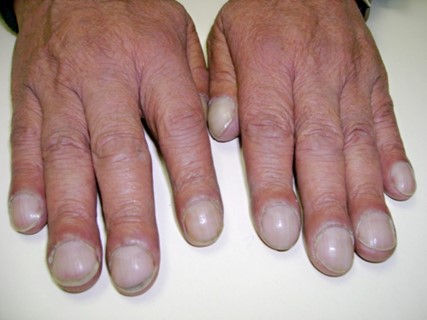Which immunoglobulin may contribute to the pathophysiology of asthma
IgA
IgE
C. IgG
IgM
The Correct Answer is B
IgE is the immunoglobulin associated with allergic reactions and is often elevated in patients with asthma. When a person with asthma is exposed to an allergen, their IgE levels increase, leading to the release of inflammatory chemicals such as histamine, which can cause bronchoconstriction and other symptoms of asthma.
IgA: This is an immunoglobulin that plays a role in the immune system's defense against infections. It is mainly found in the mucous membranes of the respiratory and gastrointestinal tracts.
IgG: This is the most abundant immunoglobulin in the bloodstream and plays a role in providing immunity against bacterial and viral infections. It can also cross the placenta and provide passive immunity to a developing fetus.
IgM: This is the first immunoglobulin produced in response to an infection and plays a role in the body's defense against bacterial and viral infections. It is found primarily in the bloodstream.
Nursing Test Bank
Naxlex Comprehensive Predictor Exams
Related Questions
Correct Answer is {"dropdown-group-1":"A"}
Explanation
Clubbing is a medical condition characterized by bulbous enlargement of the distal portion of a digit (usually a finger, but sometimes a toe) due to soft tissue proliferation and increased bone deposition. The affected digit takes on a rounded or "club-like" appearance, and the angle between the nail and nail bed (known as the Lovibond angle) increases to greater than 180 degrees.

Clubbing is commonly associated with a variety of medical conditions that interfere with oxygenation of the blood, including lung diseases such as chronic obstructive pulmonary disease (COPD), interstitial lung disease, and bronchiectasis; heart diseases such as congenital heart defects and cyanotic heart disease; and gastrointestinal diseases such as inflammatory bowel disease and cirrhosis.
The exact mechanism underlying clubbing is not fully understood, but it is thought to involve a combination of vascular, inflammatory, and neurogenic factors. Hypoxia (low oxygen levels) is believed to play a central role in the development
of clubbing, leading to the release of growth factors and cytokines that promote soft tissue and bone proliferation.
Clubbing is typically diagnosed based on physical examination findings, including the Lovibond angle and the presence of nail bed fluctuation (when the nail bed feels spongy or compressible). It is important to identify and treat any underlying medical conditions that may be contributing to clubbing, as these can have significant implications for the patient's health and quality of life.
Correct Answer is C
Explanation
Hyperventilation refers to an increased rate and depth of breathing, which results in excessive elimination of carbon dioxide (CO2) from the body. Carbon dioxide is an acidic gas that helps regulate the pH of the blood. When too much CO2 is lost through hyperventilation, it causes a decrease in the partial pressure of carbon dioxide in the blood (PaCO2), leading to a condition called hypocapnia.
Hypocapnia can cause symptoms such as lightheadedness, dizziness, and tingling in the fingers and toes.
Whether you are a student looking to ace your exams or a practicing nurse seeking to enhance your expertise , our nursing education contents will empower you with the confidence and competence to make a difference in the lives of patients and become a respected leader in the healthcare field.
Visit Naxlex, invest in your future and unlock endless possibilities with our unparalleled nursing education contents today
Report Wrong Answer on the Current Question
Do you disagree with the answer? If yes, what is your expected answer? Explain.
Kindly be descriptive with the issue you are facing.
